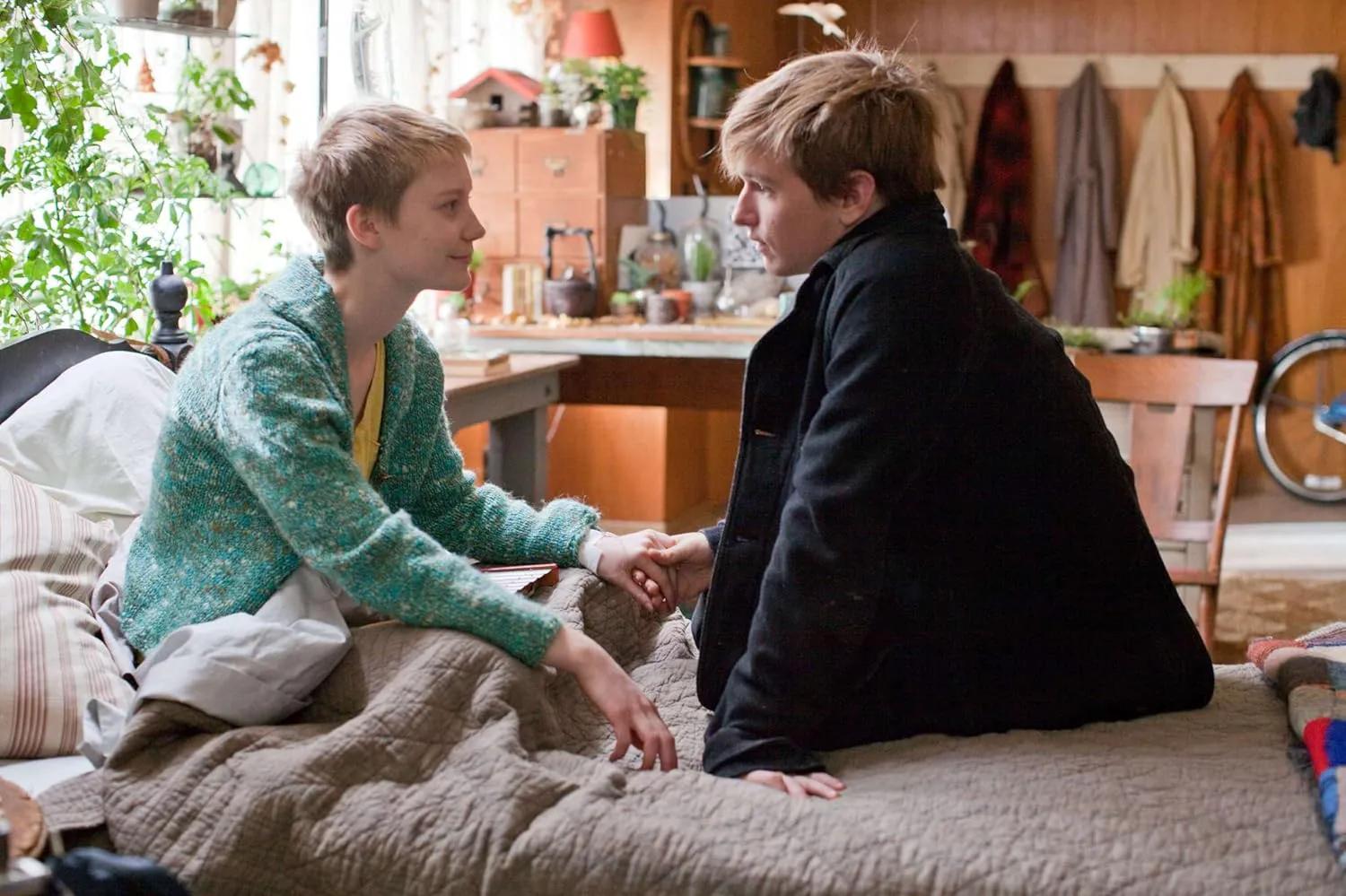“Restless”: A Poetic Exploration of Life and Loss
On the surface, “Restless” might seem like a tearjerker, but at its core, it’s an existential poem. Gus Van Sant’s film delves into the complexities of grief, love, and the search for meaning in the face of mortality.
The story centers around Enoch (Henry Hopper), a young man grappling with the recent loss of his parents. He finds solace in unconventional ways, such as playing Battleship with the ghost of a Japanese kamikaze pilot and attending funerals of strangers. It’s at one of these somber gatherings that he encounters Annabel (Mia Wasikowska), a spirited girl who initially claims to volunteer at a children’s cancer hospital. However, she soon reveals her own battle with terminal cancer. Enoch, unfazed, responds with a simple “That’s okay,” and an unlikely friendship blossoms.
Van Sant’s Return to Intimate Storytelling
Following the Oscar-nominated political drama “Milk,” director Gus Van Sant returns to his favored style: a small, self-contained narrative driven by young protagonists. However, this time, the subject matter takes a surprisingly melodramatic and potentially controversial turn. It’s easy to criticize a poet, and equally easy to find fault with a story where the heroine dies, the hero lives on, and a voiceover bluntly declares that love is more complex than death.
One could point to Annabel’s remarkably healthy appearance as a prime example. By portraying his dying character as vibrantly alive, Van Sant arguably bends reality, sacrificing medical accuracy for the sake of aesthetics. The only concession to her illness is Wasikowska’s haircut, which, incidentally, suits her incredibly well. Furthermore, after Annabel’s initial revelation, the film unfolds in an almost impressionistic manner, with individual scenes feeling somewhat dispensable and, therefore, potentially superfluous.

Quirky Charm or Forced Uniqueness?
The film’s deliberate “quirkiness,” reminiscent of “Juno” or “500 Days of Summer,” might also be seen as unnecessary or even affected. The characters initially engage in dark humor, conversing with deceased parents, touring a morgue, and drawing chalk outlines of themselves on the pavement. As the reality of their situation sets in, they shift their focus to ornithology books, fencing lessons, and elaborate vintage outfits. Van Sant presents this “turn to life” with a rom-com-esque montage, which some might interpret as a provocation.
A Film That Divides and Conquers
Despite these potential pitfalls, the very qualities that might repel some viewers are likely to resonate deeply with others who are more impressionable, sensitive, or simply in the right frame of mind. The appealing young actors (Hopper is the son of Dennis Hopper, and Wasikowska is a rising star in Hollywood), their endearing eccentricities, the soft lighting, and the sharp dialogue all contribute to a generally pleasing and aesthetically pleasing experience. Ultimately, regardless of the director’s intentions, his craftsmanship remains skillful and refined. When Enoch retreats to the bathroom, awkwardly faces the camera, and sheds a single tear – the only one in the entire film – it’s hard not to feel a lump in your own throat after spending the past hour fighting one back.
Embracing Life’s Absurdity
In reality, Van Sant’s film is about something else entirely. It’s no coincidence that the protagonist, after navigating the stages of grief from denial to depression, ultimately accepts his circumstances with a strange, almost inappropriate smile. The film’s message, while subtle, is profound: life is precious, even in the face of death. The characters don’t just talk about this message; they embody it through their silly costumes, strange flirtations, and dedicated study of Latin names for aquatic birds – birds that, as Annabel explains, are special simply because she likes them.